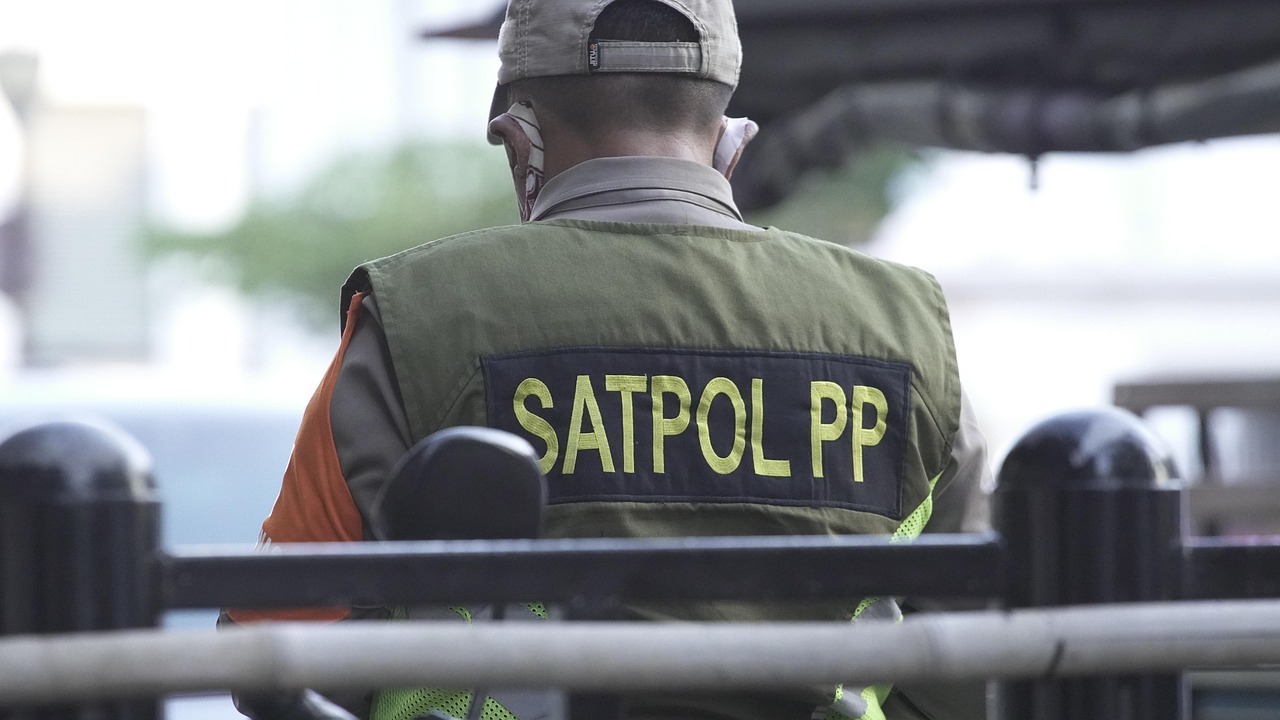This article explores the most heartwarming and emotional episodes of Paw Patrol, delving into themes of friendship, bravery, and teamwork that resonate deeply with both children and adults. The show has touched the hearts of many, teaching valuable lessons through its engaging storylines and lovable characters.
Why Are Emotional Episodes Important in Children’s Shows?
Emotional episodes play a crucial role in children’s programming. They help young viewers understand complex feelings and develop empathy through relatable storytelling and character experiences. By witnessing the challenges and triumphs of their favorite characters, children learn to navigate their own emotions and build connections with others.
Top 5 Most Emotional Paw Patrol Episodes
- Episode 1: Pups Save a Hoot – In this episode, the Paw Patrol team helps a baby owl find its way home, emphasizing themes of family and the importance of helping others in need.
- Episode 2: Pups Save a Bat Family – The Paw Patrol rescues a family of bats, illustrating the significance of acceptance and understanding differences, while teaching children about wildlife conservation.
- Episode 3: Pups Save the Penguins – In this touching episode, the team aids lost penguins, highlighting the importance of teamwork and the emotional bonds formed through shared adventures.
- Episode 4: Pups Save a Friend – When a friend is in trouble, the Paw Patrol demonstrates loyalty and bravery, teaching young viewers the value of standing by friends during difficult times.
- Episode 5: Pups Save a Dolphin – This episode showcases the rescue of a stranded dolphin, emphasizing the themes of empathy and environmental stewardship, while encouraging children to care for marine life.
The Role of Friendship in Paw Patrol
Friendship is a central theme in Paw Patrol, with episodes often focusing on how the pups support each other through challenges. This reinforces the importance of camaraderie and teamwork, showing young viewers that working together can overcome obstacles.
Lessons Learned from Emotional Episodes
Each emotional episode of Paw Patrol imparts valuable life lessons, encouraging children to express their feelings, show empathy, and understand the significance of helping others in their community. These lessons are seamlessly woven into the narratives, making them memorable and impactful.
Building Empathy Through Storytelling
The storytelling in Paw Patrol is designed to foster empathy, allowing children to relate to characters’ struggles and triumphs. By engaging with these narratives, children enhance their emotional intelligence and learn to appreciate diverse perspectives.
Understanding Complex Emotions
Through various scenarios, Paw Patrol introduces children to complex emotions like fear, sadness, and joy. This helps them navigate their own feelings in a safe and supportive environment, providing them with tools to deal with real-life situations.
Fan Reactions to Emotional Episodes
Fans often express their emotional responses to specific episodes, sharing how these moments resonate with their own experiences. The show’s ability to connect with audiences on an emotional level contributes to its enduring popularity.
The Impact of Paw Patrol on Young Viewers
Paw Patrol‘s emotional storytelling not only entertains but also shapes the social and emotional development of young viewers. It offers lessons that extend beyond the screen, making it a significant part of children’s media today.
Future Directions for Paw Patrol
As the series continues to evolve, exploring new emotional themes and challenges will be key to maintaining its relevance and connection with audiences of all ages. By continually addressing important issues, Paw Patrol can remain a beloved fixture in children’s programming.

Why Are Emotional Episodes Important in Children’s Shows?
Emotional episodes are a vital component of children’s programming, serving as an essential tool for fostering understanding and empathy among young viewers. These carefully crafted narratives allow children to explore complex feelings and navigate their emotional landscapes through the lens of relatable characters and engaging storylines.
One of the primary reasons emotional episodes are important is their ability to validate feelings. Children often experience a myriad of emotions, from joy and excitement to sadness and fear. By portraying characters who undergo similar emotional journeys, shows like Paw Patrol help children recognize that their feelings are normal and shared by others. This validation can be comforting, especially during challenging times.
Moreover, emotional episodes encourage empathy by presenting scenarios that require characters to understand and respond to the feelings of others. When children witness characters showing compassion and support for one another, they learn to mirror these behaviors in their own lives. This is particularly important in a world where social interactions are increasingly complex. Through storytelling, children can practice empathy in a safe environment, preparing them for real-life situations.
Additionally, these episodes often introduce children to conflict resolution and coping strategies. Characters in emotional situations must often navigate their feelings and find constructive ways to deal with challenges. For example, a character might feel sad after losing a toy but learns to communicate their feelings to a friend, illustrating the importance of expressing emotions rather than bottling them up. This not only helps children understand how to handle their emotions but also encourages healthy communication skills.
Furthermore, emotional storytelling can enhance a child’s emotional intelligence. By engaging with narratives that explore various feelings, children can develop a better understanding of their own emotions and those of others. This growth in emotional intelligence is crucial for building strong, healthy relationships throughout their lives. Programs that incorporate emotional episodes are thus instrumental in laying the groundwork for social and emotional development.
Research has shown that children who regularly engage with emotionally rich content are better equipped to handle their emotions and demonstrate empathy towards others. This is particularly important in today’s society, where emotional literacy is often overlooked in traditional education. By integrating emotional lessons into children’s programming, shows like Paw Patrol are not just entertaining; they are also educational.
In summary, emotional episodes in children’s shows play a significant role in helping young viewers navigate their feelings and develop empathy. Through relatable storytelling and character experiences, these episodes not only validate emotions but also teach valuable life lessons about compassion, conflict resolution, and emotional intelligence. As children engage with these narratives, they are better prepared to understand themselves and the world around them, making emotional episodes an indispensable element of children’s media.

Top 5 Most Emotional Paw Patrol Episodes
This section highlights five standout episodes of Paw Patrol that tug at the heartstrings, showcasing moments of courage, compassion, and friendship among the beloved characters. These episodes not only entertain but also impart valuable life lessons that resonate with both children and adults alike.
- Episode 1: Pups Save a Hoot
In this touching episode, the Paw Patrol team comes to the aid of a lost baby owl trying to find its way home. The narrative emphasizes the importance of family and the willingness to help those in need. Viewers are reminded that sometimes, even the smallest creatures need a little guidance and love.
- Episode 2: Pups Save a Bat Family
This episode features the Paw Patrol rescuing a family of bats, highlighting themes of acceptance and understanding differences. It educates children about wildlife conservation and the importance of respecting all creatures, no matter how different they may seem.
- Episode 3: Pups Save the Penguins
In this heartwarming episode, the Paw Patrol helps a group of lost penguins. The story beautifully illustrates the significance of teamwork and showcases how emotional bonds can form through shared adventures. The pups learn that working together can lead to incredible outcomes.
- Episode 4: Pups Save a Friend
When one of their friends finds themselves in trouble, the Paw Patrol demonstrates unwavering loyalty and bravery. This episode teaches young viewers the value of standing by their friends during difficult times, reinforcing the message that true friends support each other.
- Episode 5: Pups Save a Dolphin
This episode follows the rescue of a stranded dolphin, emphasizing empathy and environmental stewardship. It encourages children to care for marine life and understand their role in protecting the environment, making it a powerful narrative about compassion and responsibility.
These episodes are not just entertaining; they serve as vital tools for teaching children about empathy, teamwork, and the importance of helping others. Each story unfolds in a way that resonates with young audiences, allowing them to connect emotionally with the characters and their adventures.
In summary, the emotional depth of these episodes reflects the show’s commitment to imparting valuable lessons while engaging its viewers. Through the lens of adventure and friendship, Paw Patrol continues to inspire children to be brave, compassionate, and supportive of one another.
Episode 1:
The Most Emotional Paw Patrol Episodes
This article explores the most heartwarming and emotional episodes of Paw Patrol, delving into themes of friendship, bravery, and teamwork that resonate deeply with both children and adults.
Why Are Emotional Episodes Important in Children’s Shows?
Emotional episodes play a crucial role in children’s programming, helping young viewers understand complex feelings and develop empathy through relatable storytelling and character experiences.
Top 5 Most Emotional Paw Patrol Episodes
- Episode 1: Pups Save a Hoot – In this episode, the Paw Patrol team helps a baby owl find its way home, emphasizing themes of family and the importance of helping others in need.
- Episode 2: Pups Save a Bat Family – The Paw Patrol rescues a family of bats, illustrating the significance of acceptance and understanding differences, while teaching children about wildlife conservation.
- Episode 3: Pups Save the Penguins – In this touching episode, the team aids lost penguins, highlighting the importance of teamwork and the emotional bonds formed through shared adventures.
- Episode 4: Pups Save a Friend – When a friend is in trouble, the Paw Patrol demonstrates loyalty and bravery, teaching young viewers the value of standing by friends during difficult times.
- Episode 5: Pups Save a Dolphin – This episode showcases the rescue of a stranded dolphin, emphasizing the themes of empathy and environmental stewardship, while encouraging children to care for marine life.
The Role of Friendship in Paw Patrol
Friendship is a central theme in Paw Patrol, with episodes often focusing on how the pups support each other through challenges, reinforcing the importance of camaraderie and teamwork.
Lessons Learned from Emotional Episodes
Each emotional episode of Paw Patrol imparts valuable life lessons, encouraging children to express their feelings, show empathy, and understand the significance of helping others in their community.
Building Empathy Through Storytelling
The storytelling in Paw Patrol is designed to foster empathy, allowing children to relate to characters’ struggles and triumphs, thereby enhancing their emotional intelligence.
Understanding Complex Emotions
Through various scenarios, Paw Patrol introduces children to complex emotions like fear, sadness, and joy, helping them navigate their own feelings in a safe and supportive environment.
Fan Reactions to Emotional Episodes
Fans often express their emotional responses to specific episodes, sharing how these moments resonate with their own experiences and contribute to the show’s enduring popularity.
The Impact of Paw Patrol on Young Viewers
Paw Patrol‘s emotional storytelling not only entertains but also shapes the social and emotional development of young viewers, making it a significant part of children’s media today.
Future Directions for Paw Patrol
As the series continues to evolve, exploring new emotional themes and challenges will be key to maintaining its relevance and connection with audiences of all ages.
Pups Save a Hoot
is one of the most memorable episodes from the beloved children’s series Paw Patrol. In this touching episode, the Paw Patrol team embarks on a heartwarming adventure to help a baby owl find its way back home. This episode beautifully encapsulates the themes of family, friendship, and the importance of helping others in need, making it a standout in the series.
The narrative begins when Ryder receives a call about a baby owl that has fallen from its nest. The team quickly springs into action, showcasing their signature teamwork and bravery. Each character brings their unique skills to the table, demonstrating how collaboration is key to overcoming challenges. As the pups navigate through the challenges of rescuing the baby owl, children learn valuable lessons about compassion and empathy.
This episode is significant not only for its engaging storyline but also for the emotional depth it provides. Children watching the episode are encouraged to understand the feelings of the baby owl, who is scared and alone. This helps young viewers develop a sense of empathy, as they can relate to the owl’s plight. The Paw Patrol pups, with their unwavering determination, serve as role models, showing how important it is to help those in distress.
Throughout the episode, the emotional journey of the baby owl resonates with viewers. The visual storytelling is enhanced by the expressive animations of the owl, which convey its fear and longing for home. The Paw Patrol’s efforts to reunite the owl with its family emphasize the message that family bonds are vital and worth fighting for.
- Bravery: The pups face various obstacles, teaching kids that being brave means stepping up for others.
- Teamwork: Each pup plays a crucial role, reinforcing the idea that working together leads to success.
- Compassion: The episode encourages children to show kindness and understanding towards those in need.
The impact of “Pups Save a Hoot” extends beyond entertainment. It serves as a tool for parents and educators to discuss important topics such as emotional intelligence and social responsibility. By watching the Paw Patrol work together to save the owl, children can learn about the significance of helping others and the joy that comes from acts of kindness.
Fans of the show often express their emotional responses to this episode, sharing how it resonates with their personal experiences. Social media platforms are filled with discussions about the lessons learned and the heartfelt moments that make “Pups Save a Hoot” a cherished episode. Parents appreciate the opportunity to engage their children in conversations about empathy and helping others, making it a valuable addition to the Paw Patrol series.
In summary, “Pups Save a Hoot” stands out as a shining example of how children’s programming can deliver powerful messages wrapped in engaging storytelling. The episode not only entertains but also educates young viewers about the importance of family, teamwork, and compassion. As Paw Patrol continues to evolve, episodes like this will remain essential in shaping the emotional development of children, ensuring that they grow up with a strong sense of empathy and social responsibility.
Paw Patrol is a beloved children’s show that not only entertains but also imparts valuable life lessons through its emotional storytelling. One of the most touching episodes is titled Pups Save a Hoot. In this episode, the Paw Patrol team embarks on a heartwarming adventure to help a lost baby owl find its way home. This narrative beautifully emphasizes the themes of family and the importance of helping others in need, showcasing the show’s commitment to fostering empathy and kindness among its young viewers.
The storyline begins when the baby owl is separated from its family during a storm. The Paw Patrol team, led by Ryder, quickly springs into action. As they navigate through the forest, they encounter various challenges that require teamwork and problem-solving skills. Each pup brings their unique abilities to the table, demonstrating how collaboration can lead to success. This episode not only highlights the significance of family bonds but also teaches children the value of community support and friendship.
Throughout the episode, viewers witness the emotional journey of the baby owl as it experiences fear and loneliness. The Paw Patrol pups reassure the owl, illustrating how compassion can help alleviate anxiety. This moment resonates deeply with children, as it reflects the feelings they may encounter in their own lives. By seeing the pups’ determination to reunite the owl with its family, young audiences learn that helping others is a noble and rewarding endeavor.
Moreover, the episode serves as a powerful reminder that not all heroes wear capes; sometimes, they are just a group of caring friends willing to lend a hand. The emotional depth of Pups Save a Hoot is further enhanced by the vibrant animation and engaging dialogue, making it a memorable experience for viewers of all ages.
In addition to this episode, Paw Patrol features several other emotional narratives that explore themes of bravery, loyalty, and friendship. For instance, in Pups Save a Bat Family, the team learns to appreciate differences while rescuing a family of bats. This episode beautifully illustrates the importance of acceptance and understanding, encouraging children to embrace diversity in their own lives.
Another standout episode, Pups Save the Penguins, highlights the importance of teamwork and the emotional bonds that develop through shared adventures. The pups work together to help lost penguins find their way back home, reinforcing the idea that collaboration can lead to positive outcomes.
As the series progresses, the Paw Patrol continues to tackle complex emotions such as fear, sadness, and joy, helping children navigate their feelings in a supportive environment. Each episode serves as a tool for building empathy and understanding, allowing young viewers to connect with the characters on a deeper level.
Fan reactions to these emotional episodes are overwhelmingly positive, with many parents noting how the stories resonate with their own experiences. This connection enhances the show’s popularity and solidifies its place in children’s media. As Paw Patrol evolves, it is crucial for the series to continue exploring new emotional themes, ensuring that it remains relevant and impactful for future generations.
In summary, the emotional storytelling in Paw Patrol not only entertains but also shapes the social and emotional development of its viewers. Episodes like Pups Save a Hoot serve as poignant reminders of the importance of family, friendship, and helping others, making the series a significant part of children’s programming today.
Episode 2:
Pups Save a Bat Family is one of the most cherished episodes of Paw Patrol, showcasing not only adventure but also valuable life lessons for young viewers. In this episode, the Paw Patrol team embarks on a mission to rescue a family of bats that find themselves in a precarious situation. The storyline is rich with themes of acceptance and understanding, as it teaches children the importance of embracing differences and the significance of wildlife conservation.
As the episode unfolds, the pups encounter challenges that require them to work together, demonstrating the essence of teamwork. Each character brings unique skills to the table, illustrating how collaboration can lead to successful outcomes. This not only engages children but also encourages them to appreciate the value of diversity in their own friendships and interactions.
Throughout the episode, the emotional connection between the pups and the bats is palpable. The narrative emphasizes the compassion that the Paw Patrol has for all creatures, big and small. This is particularly important for young viewers, as it fosters an understanding of empathy and care for the environment. The episode serves as an excellent conversation starter for parents and children to discuss the importance of protecting wildlife and respecting all living beings.
- Theme of Acceptance: The episode teaches children to accept differences in others, whether they are animals or people.
- Wildlife Conservation: It highlights the importance of caring for our environment and the creatures that inhabit it.
- Teamwork and Collaboration: The pups demonstrate how working together can solve problems effectively.
Moreover, the episode is crafted in a way that is both entertaining and educational. The vibrant animation and engaging dialogue keep young viewers captivated while imparting essential life lessons. As the Paw Patrol successfully rescues the bat family, children learn that every creature has its own role in the ecosystem, reinforcing the idea that we must work together to maintain balance in nature.
In addition to the core themes, Pups Save a Bat Family also addresses common childhood fears, such as the fear of the dark or unfamiliar creatures. By portraying the bats in a positive light, the episode encourages children to confront their fears and view the world with curiosity rather than apprehension.
Overall, this episode stands out not just for its entertainment value but also for its profound messages. It resonates with both children and adults alike, making it a memorable addition to the Paw Patrol series. The blend of adventure, emotion, and education makes it a perfect example of how children’s programming can shape young minds while providing wholesome entertainment.
As we continue to explore the emotional depth of Paw Patrol, it becomes clear that episodes like Pups Save a Bat Family are instrumental in teaching children about empathy, teamwork, and the importance of caring for our world.
Pups Save a Bat Family
is one of the most emotional episodes of Paw Patrol, showcasing not just adventure but also valuable life lessons about acceptance and understanding. In this episode, the Paw Patrol team embarks on a mission to rescue a family of bats, which serves as a poignant reminder of the importance of embracing differences and caring for all creatures.
The storyline begins when the pups discover that a family of bats is in distress. The episode cleverly introduces the concept of wildlife conservation, teaching young viewers about the significance of protecting various species. As the pups work together to help the bat family, they demonstrate qualities such as teamwork, compassion, and bravery.
Episodes like are crucial in children’s programming for several reasons:
- Empathy Development: Young viewers learn to empathize with characters who are different from themselves.
- Environmental Awareness: The episode encourages children to care for wildlife and understand their role in the ecosystem.
- Social Skills: The interactions between the pups help kids learn how to work collaboratively and support one another.
This episode touches on several important themes:
- Acceptance: The pups learn to accept the bats despite their differences, teaching children the value of embracing diversity.
- Friendship: The bonds between the pups are reinforced as they support each other in their mission, highlighting the importance of teamwork.
- Helping Others: The central message revolves around helping those in need, a lesson that resonates with both children and adults.
Fans of Paw Patrol have expressed their emotional reactions to this episode, often sharing how it resonates with their own experiences. Many parents appreciate how the show addresses complex themes in a way that is accessible for young children. The emotional depth of episodes like contributes to the show’s enduring popularity and its ability to engage audiences of all ages.
Through the adventures of the Paw Patrol, children are taught valuable life lessons. In this episode, the key takeaways include:
- Understanding Differences: Children learn that everyone is unique and that differences should be celebrated rather than feared.
- Teamwork Makes the Dream Work: The pups’ success in rescuing the bats is a testament to the power of collaboration.
- Compassion for All Creatures: The episode instills a sense of responsibility towards the environment and all living beings.
In conclusion, stands out as a touching episode that not only entertains but also educates. Its emphasis on empathy, teamwork, and environmental stewardship makes it a significant part of the Paw Patrol series, ensuring that young viewers walk away with valuable lessons that extend beyond the screen.
The Most Emotional Paw Patrol Episodes
This article explores the most heartwarming and emotional episodes of Paw Patrol, delving into themes of friendship, bravery, and teamwork that resonate deeply with both children and adults.
Why Are Emotional Episodes Important in Children’s Shows?
Emotional episodes play a crucial role in children’s programming, helping young viewers understand complex feelings and develop empathy through relatable storytelling and character experiences. These narratives encourage children to recognize and express their emotions while fostering a sense of community and support.
Top 5 Most Emotional Paw Patrol Episodes
- Episode 1: Pups Save a Hoot – In this episode, the Paw Patrol team helps a baby owl find its way home, emphasizing themes of family and the importance of helping others in need.
- Episode 2: Pups Save a Bat Family – The Paw Patrol rescues a family of bats, illustrating the significance of acceptance and understanding differences, while teaching children about wildlife conservation.
- Episode 3: Pups Save the Penguins – In this touching episode, the team aids lost penguins, highlighting the importance of teamwork and the emotional bonds formed through shared adventures.
- Episode 4: Pups Save a Friend – When a friend is in trouble, the Paw Patrol demonstrates loyalty and bravery, teaching young viewers the value of standing by friends during difficult times.
- Episode 5: Pups Save a Dolphin – This episode showcases the rescue of a stranded dolphin, emphasizing the themes of empathy and environmental stewardship, while encouraging children to care for marine life.
The Role of Friendship in Paw Patrol
Friendship is a central theme in Paw Patrol, with episodes often focusing on how the pups support each other through challenges, reinforcing the importance of camaraderie and teamwork. The interactions between characters serve as valuable lessons in loyalty, trust, and the power of working together towards a common goal.
Lessons Learned from Emotional Episodes
Each emotional episode of Paw Patrol imparts valuable life lessons, encouraging children to express their feelings, show empathy, and understand the significance of helping others in their community. These lessons are not only entertaining but also educational, providing children with tools to navigate their social environments.
Building Empathy Through Storytelling
The storytelling in Paw Patrol is designed to foster empathy, allowing children to relate to characters’ struggles and triumphs, thereby enhancing their emotional intelligence. By witnessing the pups face challenges, young viewers learn to appreciate different perspectives and the importance of kindness.
Understanding Complex Emotions
Through various scenarios, Paw Patrol introduces children to complex emotions like fear, sadness, and joy, helping them navigate their own feelings in a safe and supportive environment. This emotional education is crucial for developing resilience and coping mechanisms in real life.
Fan Reactions to Emotional Episodes
Fans often express their emotional responses to specific episodes, sharing how these moments resonate with their own experiences and contribute to the show’s enduring popularity. Social media platforms are filled with discussions about the impact of these episodes, indicating a strong connection between the show and its audience.
The Impact of Paw Patrol on Young Viewers
Paw Patrol’s emotional storytelling not only entertains but also shapes the social and emotional development of young viewers, making it a significant part of children’s media today. The show encourages children to embrace their feelings and fosters a sense of community among peers.
Future Directions for Paw Patrol
As the series continues to evolve, exploring new emotional themes and challenges will be key to maintaining its relevance and connection with audiences of all ages. The potential for growth in character development and story arcs ensures that Paw Patrol will remain a beloved part of children’s entertainment for years to come.
Episode 3:
Pups Save the Penguins is one of the most emotional episodes of Paw Patrol, showcasing the values of teamwork, compassion, and the importance of friendship. In this heartwarming story, the Paw Patrol team embarks on an adventure to help lost penguins find their way back home. This episode not only entertains young viewers but also imparts valuable life lessons that resonate deeply with both children and adults.
The episode begins with a scene where the Paw Patrol receives a call about a group of penguins that have strayed away from their icy habitat. The pups quickly spring into action, demonstrating their readiness and willingness to help those in need. This immediate response highlights the theme of bravery and the importance of being proactive in the face of challenges. The young audience learns that taking initiative is crucial when it comes to helping others.
During their journey, the Paw Patrol encounters various obstacles that test their problem-solving skills and teamwork. For instance, they must navigate through a series of icy terrains and work together to ensure the penguins’ safety. This aspect of the episode emphasizes the significance of collaboration and how working together can lead to successful outcomes. Children watching this episode are encouraged to understand that teamwork is essential not just in fun activities but also in overcoming challenges.
As the pups assist the penguins, emotional bonds begin to form. The penguins express their gratitude, and the pups learn the value of compassion and empathy. This moment is particularly touching, as it illustrates the profound connections that can develop when individuals come together to support one another. The show effectively conveys that helping others leads to mutual respect and understanding, fostering a sense of community.
Furthermore, the episode subtly addresses the theme of environmental stewardship. By highlighting the natural habitat of the penguins, it sparks curiosity in young viewers about wildlife conservation and the importance of protecting our planet. This educational aspect encourages children to think critically about their environment and the role they play in preserving it.
Throughout the episode, the animation and storytelling techniques engage the audience, making the emotional moments impactful. The music, character expressions, and dialogue all work together to create a captivating experience that resonates with viewers. This combination of elements enhances the overall message of the episode, ensuring that the lessons learned are memorable.
In summary, Pups Save the Penguins serves as a powerful reminder of the importance of teamwork, empathy, and environmental awareness. The emotional depth of this episode not only entertains but also educates, making it a standout in the Paw Patrol series. As children watch the pups navigate their adventure, they are inspired to embody the same values of courage and compassion in their own lives, ultimately shaping their social and emotional development.
Pups Save the Penguins
is one of the most beloved episodes of Paw Patrol, captivating audiences with its heartwarming storyline and valuable lessons. In this episode, the Paw Patrol team embarks on an adventure to rescue a group of lost penguins, highlighting themes of teamwork, compassion, and friendship.
The episode begins with the pups enjoying a sunny day in Adventure Bay when they receive a call about a family of penguins who have wandered away from their home. The pups quickly spring into action, demonstrating their characteristic bravery and determination to help those in need. This sets the stage for a thrilling yet emotional journey that resonates with both children and adults alike.
Why Is “Pups Save the Penguins” Significant?
- Teamwork: The episode emphasizes the importance of teamwork, as each pup brings their unique skills to the table. From Chase’s police skills to Skye’s flying capabilities, the pups work together seamlessly to achieve their goal.
- Empathy: Throughout the episode, viewers witness the pups’ genuine concern for the penguins’ well-being. This teaches children the value of empathy and understanding towards others, especially those who may be different from them.
- Adventure and Fun: The thrilling adventure of rescuing the penguins keeps young viewers engaged, combining excitement with important life lessons.
Key Moments in the Episode
| Moment | Description |
|---|---|
| Discovery | The pups discover the lost penguins waddling around Adventure Bay, prompting their mission. |
| Obstacle Course | The team navigates through various obstacles, showcasing their problem-solving skills and teamwork. |
| Rescue | In a heartwarming climax, the pups successfully guide the penguins back home, reinforcing the message of helping others. |
Lessons Learned from “Pups Save the Penguins”
- Helping Others: The episode reinforces the idea that helping others is a noble and rewarding pursuit.
- Understanding Differences: By interacting with the penguins, children learn to appreciate and accept differences in others.
- Friendship: The bond between the pups is a testament to the strength of friendship, teaching young viewers the importance of supporting one another.
Fan Reactions
Fans of Paw Patrol often express their love for “Pups Save the Penguins,” sharing how the episode resonates with their own experiences of friendship and teamwork. Many parents appreciate the way the show addresses complex emotions in a way that is accessible to children, making it a staple in family viewing.
The Impact of “Pups Save the Penguins” on Young Viewers
This episode, like many others in the series, plays a crucial role in shaping the social and emotional development of young viewers. By presenting relatable scenarios and characters, it helps children navigate their feelings and understand the importance of community and support.
Future Directions for Paw Patrol
As Paw Patrol continues to evolve, episodes like “Pups Save the Penguins” set a strong foundation for exploring new themes of empathy, friendship, and adventure. The show’s commitment to delivering meaningful content ensures that it remains relevant and cherished by audiences of all ages.
Paw Patrol has captured the hearts of children and parents alike with its engaging stories and lovable characters. Among the many episodes that stand out, some are particularly emotional, resonating deeply with viewers. This article explores the most heartwarming and emotional episodes of Paw Patrol, highlighting the themes of friendship, bravery, and teamwork that are integral to the series.
Why Are Emotional Episodes Important in Children’s Shows?
Emotional episodes play a crucial role in children’s programming. They help young viewers understand complex feelings and develop empathy through relatable storytelling. By witnessing characters navigate challenges and express emotions, children learn valuable life lessons that shape their understanding of the world around them.
Top 5 Most Emotional Paw Patrol Episodes
- Episode 1: Pups Save a Hoot – The Paw Patrol team embarks on a mission to help a lost baby owl find its way home. This episode emphasizes the importance of family and the joy of helping others in need.
- Episode 2: Pups Save a Bat Family – In a heartwarming adventure, the team rescues a family of bats, showcasing themes of acceptance and understanding differences, while also educating children about wildlife conservation.
- Episode 3: Pups Save the Penguins – In this touching episode, the Paw Patrol aids lost penguins, highlighting the significance of teamwork and the emotional bonds formed through shared adventures. The pups work together, demonstrating that collaboration can lead to success and happiness.
- Episode 4: Pups Save a Friend – When one of their friends is in trouble, the Paw Patrol pups exemplify loyalty and bravery, teaching young viewers the value of standing by friends during difficult times.
- Episode 5: Pups Save a Dolphin – This episode features the rescue of a stranded dolphin, emphasizing themes of empathy and environmental stewardship, encouraging children to care for marine life and the environment.
The Role of Friendship in Paw Patrol
Friendship is a central theme in Paw Patrol. Episodes frequently focus on how the pups support each other through challenges. This reinforces the importance of camaraderie and teamwork, teaching children that they can rely on friends during tough times.
Lessons Learned from Emotional Episodes
Each emotional episode of Paw Patrol imparts valuable life lessons. They encourage children to express their feelings, show empathy, and understand the significance of helping others in their community. By engaging with these stories, children learn to navigate their own emotions and develop a sense of compassion.
Building Empathy Through Storytelling
The storytelling in Paw Patrol is designed to foster empathy. By allowing children to relate to characters’ struggles and triumphs, the show enhances their emotional intelligence. This connection helps children understand the feelings of others, promoting a more compassionate worldview.
Understanding Complex Emotions
Through various scenarios, Paw Patrol introduces children to complex emotions like fear, sadness, and joy. This exposure helps them navigate their own feelings in a safe and supportive environment, equipping them with the tools to handle emotional situations in real life.
Fan Reactions to Emotional Episodes
Fans of Paw Patrol often express their emotional responses to specific episodes. Social media platforms are filled with discussions on how these moments resonate with personal experiences, contributing to the show’s enduring popularity. Parents appreciate the positive messages and life lessons embedded within the narratives.
The Impact of Paw Patrol on Young Viewers
The emotional storytelling in Paw Patrol not only entertains but also shapes the social and emotional development of young viewers. By addressing important themes, the series plays a significant role in children’s media today, helping to mold future generations with a strong sense of empathy and community.
Future Directions for Paw Patrol
As Paw Patrol continues to evolve, exploring new emotional themes and challenges will be key to maintaining its relevance. The show’s ability to connect with audiences of all ages ensures that it will remain a beloved part of children’s programming for years to come.
Episode 4:
Pups Save a Friend is one of the most emotional episodes of Paw Patrol, showcasing the profound themes of loyalty and bravery. In this episode, the Paw Patrol team faces a challenging situation when one of their friends finds themselves in trouble. This situation serves as a powerful narrative that teaches young viewers the importance of standing by friends during difficult times.
The episode begins with the pups enjoying a sunny day in Adventure Bay. However, their fun is abruptly interrupted when they receive a distress call from a friend in need. The urgency of the situation quickly sets the tone for the episode, drawing viewers into the emotional stakes that the characters face. As the pups mobilize to help their friend, they demonstrate their unwavering commitment to one another, reinforcing the idea that true friendship means being there for each other, no matter the circumstances.
Throughout the episode, the pups encounter various obstacles that test their teamwork and resolve. Each challenge they face is a lesson in problem-solving and cooperation. The narrative effectively illustrates how working together can turn a daunting situation into a manageable one, highlighting the significance of collaboration in overcoming adversity.
The emotional core of this episode lies in the bond between the pups and their friend. As they navigate through challenges, viewers witness moments of vulnerability and courage. These moments resonate deeply, allowing children to connect with the characters on a personal level. The episode emphasizes that it is okay to feel scared or uncertain, but having friends who support you can make all the difference.
Moreover, Pups Save a Friend encourages children to express their feelings and understand the value of empathy. When the pups finally reach their friend, the reunion is filled with heartfelt emotions. This scene not only reinforces the theme of loyalty but also teaches young viewers about the importance of compassion and understanding in friendships.
In terms of storytelling, the episode is crafted with care, ensuring that the emotional moments are balanced with light-hearted humor typical of Paw Patrol. This blend keeps the young audience engaged while also delivering significant life lessons. The use of relatable scenarios helps children understand complex emotions and the importance of supporting one another.
As the narrative unfolds, parents and caregivers can use this episode as a conversation starter about friendship and emotional support. Discussing the themes presented can help children articulate their feelings and learn how to be good friends themselves. This episode serves not only as entertainment but also as a valuable teaching tool.
In summary, Pups Save a Friend stands out as an emotional episode that encapsulates the essence of friendship, loyalty, and bravery. Through its engaging storyline and relatable characters, it teaches young viewers the importance of being there for their friends during tough times. This episode, along with others in the series, contributes to the overall emotional intelligence of children, making Paw Patrol a beloved show that resonates with audiences of all ages.
Pups Save a Friend
is one of the most emotional episodes of the beloved children’s series Paw Patrol. This episode beautifully encapsulates the values of loyalty, bravery, and friendship, making it a standout moment in the series that resonates with young viewers and their families.
In the episode, the Paw Patrol team faces a challenging situation when one of their friends finds themselves in trouble. The narrative revolves around the pups’ unwavering commitment to each other, demonstrating that true friendship means being there for your loved ones during tough times. This theme is particularly important for children, as it teaches them the significance of supporting friends when they need help the most.
The episode begins with the pups engaging in their usual playful antics, showcasing their strong bond. However, the tone shifts when they receive a distress call about a friend in need. The urgency of the situation sets the stage for the pups to spring into action, highlighting their bravery and teamwork. The way they rally together to solve the problem not only entertains but also serves as a powerful lesson for young viewers about the importance of collaboration and unity.
Throughout the episode, the emotional stakes are heightened as the pups face various obstacles that test their resolve. The storytelling is crafted to evoke empathy, allowing children to connect with the characters’ feelings of concern and determination. As the pups navigate through challenges, they exemplify qualities such as courage and resilience, encouraging viewers to adopt these traits in their own lives.
One of the most poignant moments occurs when the pups finally reach their friend. The relief and joy they express upon reuniting underscore the episode’s core message: that true friends will always stand by each other, no matter the circumstances. This moment not only reinforces the theme of loyalty but also helps children understand the emotional complexities involved in friendship.
Why Are Emotional Episodes Important?
Emotional episodes like play a crucial role in children’s programming. They help young viewers navigate their own emotions by presenting relatable scenarios and character experiences. By witnessing the pups’ journey, children learn to express their feelings, understand empathy, and recognize the importance of helping others.
Lessons Learned
- Empathy: Children learn to relate to others’ feelings and understand the importance of being supportive.
- Bravery: The episode encourages kids to face challenges head-on and not shy away from difficult situations.
- Teamwork: It emphasizes that working together can lead to successful outcomes, reinforcing the idea that collaboration is key.
Fan Reactions
Fans of Paw Patrol often express their emotional responses to episodes like , sharing how these moments resonate with their own experiences. Many parents appreciate the show’s ability to teach valuable life lessons in an engaging manner, making it a staple in children’s media.
The Impact on Young Viewers
The emotional storytelling in Paw Patrol not only entertains but also shapes the social and emotional development of young viewers. Episodes like encourage children to reflect on their own friendships and understand the value of being there for others.
In conclusion, stands out as a significant episode that encapsulates the essence of friendship and loyalty. Its emotional depth and relatable themes make it a vital part of the Paw Patrol series, ensuring that it remains a beloved choice for children and their families.
Paw Patrol is not just a children’s show; it is a vibrant tapestry of emotions, teaching young viewers valuable lessons about friendship, bravery, and loyalty. One of the most poignant aspects of the series is its ability to portray real-life challenges faced by its characters, particularly in episodes where a friend is in trouble. These moments resonate deeply, illustrating the importance of standing by loved ones during difficult times.
Emotional episodes in children’s programming serve a critical purpose. They help children navigate their feelings and develop empathy. By watching characters confront challenges, young viewers learn to understand and express their own emotions. This connection to the characters fosters a sense of community and encourages children to support their friends in real-life situations.
In the episode titled Pups Save a Friend, the Paw Patrol team exemplifies what it means to be loyal and brave. When one of their own faces adversity, the pups rally together, demonstrating that true friendship means being there for one another, no matter the circumstances. This episode is particularly impactful as it teaches children that standing by their friends during tough times is not just important, but essential.
- Support: The importance of being there for friends.
- Courage: Facing fears together as a team.
- Empathy: Understanding the feelings of others.
While Pups Save a Friend is a standout, other episodes also tackle emotional themes. For instance, in Pups Save a Hoot, the team helps a baby owl find its way home, emphasizing the significance of family and helping others. Similarly, Pups Save a Dolphin showcases the rescue of a stranded dolphin, highlighting environmental stewardship and compassion.
Each episode of Paw Patrol is carefully crafted to impart valuable lessons. Through their adventures, the pups teach children about the importance of teamwork and the necessity of helping those in need. These lessons are not only entertaining but also serve as a foundation for young viewers to build their emotional intelligence.
The storytelling in Paw Patrol is designed to foster empathy. By allowing children to relate to the characters’ struggles and triumphs, the series enhances their emotional intelligence. This connection helps children navigate their own feelings in a safe and supportive environment, making the show an invaluable tool for emotional development.
Fans often share their emotional responses to specific episodes, reflecting on how these moments resonate with their own experiences. This connection not only contributes to the show’s popularity but also creates a community of viewers who support one another, mirroring the themes of friendship and loyalty portrayed in the series.
Paw Patrol’s emotional storytelling not only entertains but also shapes the social and emotional development of young viewers. As the series evolves, it continues to explore new themes and challenges, ensuring its relevance and connection with audiences of all ages.
Episode 5:
Paw Patrol has captured the hearts of children and adults alike with its engaging storytelling and lovable characters. Among its many episodes, some stand out for their emotional depth, teaching valuable life lessons through heartwarming narratives. In this article, we delve into the most emotional episodes of Paw Patrol, focusing on themes of friendship, bravery, and teamwork that resonate with viewers.
Why Are Emotional Episodes Important in Children’s Shows?
Emotional episodes play a crucial role in children’s programming, helping young viewers understand complex feelings and develop empathy through relatable storytelling and character experiences. Such episodes create opportunities for children to learn about compassion, resilience, and the importance of community support.
Top 5 Most Emotional Paw Patrol Episodes
- Episode 1: Pups Save a Hoot – In this episode, the Paw Patrol team helps a baby owl find its way home, emphasizing themes of family and the importance of helping others in need.
- Episode 2: Pups Save a Bat Family – The Paw Patrol rescues a family of bats, illustrating the significance of acceptance and understanding differences while teaching children about wildlife conservation.
- Episode 3: Pups Save the Penguins – In this touching episode, the team aids lost penguins, highlighting the importance of teamwork and the emotional bonds formed through shared adventures.
- Episode 4: Pups Save a Friend – When a friend is in trouble, the Paw Patrol demonstrates loyalty and bravery, teaching young viewers the value of standing by friends during difficult times.
- Episode 5: Pups Save a Dolphin – This episode showcases the rescue of a stranded dolphin, emphasizing the themes of empathy and environmental stewardship, while encouraging children to care for marine life.
The Role of Friendship in Paw Patrol
Friendship is a central theme in Paw Patrol, with episodes often focusing on how the pups support each other through challenges, reinforcing the importance of camaraderie and teamwork. The emotional bonds between the characters serve as a model for young viewers, illustrating how teamwork can overcome obstacles.
Lessons Learned from Emotional Episodes
Each emotional episode of Paw Patrol imparts valuable life lessons, encouraging children to express their feelings, show empathy, and understand the significance of helping others in their community. These lessons are essential for developing emotional intelligence and social skills.
Building Empathy Through Storytelling
The storytelling in Paw Patrol is designed to foster empathy, allowing children to relate to characters’ struggles and triumphs, thereby enhancing their emotional intelligence. By witnessing how the pups navigate various challenges, children learn to recognize and respond to the emotions of others.
Understanding Complex Emotions
Through various scenarios, Paw Patrol introduces children to complex emotions like fear, sadness, and joy, helping them navigate their own feelings in a safe and supportive environment. This exposure is critical in helping young viewers articulate their emotions and understand the feelings of those around them.
Fan Reactions to Emotional Episodes
Fans often express their emotional responses to specific episodes, sharing how these moments resonate with their own experiences and contribute to the show’s enduring popularity. The connection that viewers feel towards the characters enhances their engagement with the series.
The Impact of Paw Patrol on Young Viewers
Paw Patrol’s emotional storytelling not only entertains but also shapes the social and emotional development of young viewers, making it a significant part of children’s media today. The lessons learned through the adventures of the Paw Patrol pups have lasting effects on children’s understanding of relationships and community.
Future Directions for Paw Patrol
As the series continues to evolve, exploring new emotional themes and challenges will be key to maintaining its relevance and connection with audiences of all ages. Future episodes will likely continue to address important social issues while remaining entertaining and educational.
Pups Save a Dolphin
is one of the most touching episodes of the beloved children’s series Paw Patrol. This episode not only entertains but also imparts important lessons about empathy and environmental stewardship. In this article, we will explore the emotional depth of this episode, its significance in children’s programming, and the lessons it teaches young viewers.
The episode begins with the Paw Patrol team receiving a distress call about a stranded dolphin. The urgency of the situation is palpable, as the pups quickly mobilize to rescue the marine creature. This action-packed start sets the tone for an adventure filled with heartwarming moments and valuable lessons.
In “Pups Save a Dolphin,” the storyline emphasizes the importance of marine life and the role it plays in our ecosystem. The episode educates children about dolphins, their habitats, and the challenges they face in the wild. By showcasing the dolphin’s plight, the show encourages young viewers to develop a sense of responsibility towards the environment.
Throughout the episode, the Paw Patrol pups demonstrate empathy as they work together to save the stranded dolphin. They show concern for its well-being and take the necessary steps to ensure its safe return to the ocean. This portrayal of empathy is crucial for children, as it teaches them the importance of caring for others and understanding their feelings.
The episode also highlights the significance of teamwork and problem-solving. Each pup brings unique skills to the table, showcasing how collaboration can lead to successful outcomes. This message resonates with children, encouraging them to work together and support one another in their own lives.
Paw Patrol’s storytelling approach allows children to learn through adventure. As the pups face various challenges during the rescue mission, young viewers are engaged and entertained. This method of learning helps children absorb important life lessons in a fun and relatable manner.
The emotional depth of “Pups Save a Dolphin” has garnered positive reactions from fans and parents alike. Many express how the episode resonates with their own experiences, highlighting the show’s ability to connect with audiences on a personal level. The success of this episode contributes to the overall popularity of Paw Patrol, reinforcing its status as a significant part of children’s media.
By addressing environmental themes, “Pups Save a Dolphin” inspires children to become advocates for marine life. The episode encourages discussions about conservation and the importance of protecting our oceans. This not only educates young viewers but also empowers them to take action in their communities.
The emotional storytelling in “Pups Save a Dolphin” exemplifies the best of what Paw Patrol offers. It combines adventure with essential life lessons about empathy, teamwork, and environmental responsibility. As the series continues to evolve, episodes like this will undoubtedly play a vital role in shaping the social and emotional development of young viewers.
Paw Patrol has captured the hearts of many children and their families, not only through exciting adventures but also through emotionally charged episodes that teach valuable lessons. One such episode, Pups Save a Dolphin, stands out for its poignant storytelling and important themes.
This episode showcases the rescue of a stranded dolphin, highlighting the significance of empathy and environmental stewardship. As the Paw Patrol team embarks on their mission, children are encouraged to develop a sense of responsibility towards marine life. The narrative unfolds as the pups discover a dolphin trapped on a rocky shore, struggling to return to the safety of the ocean.
The episode begins with the pups receiving a call for help from their friend, Cap’n Turbot, who spots the distressed dolphin. The urgency of the situation is palpable, and the pups spring into action, demonstrating their unwavering teamwork and bravery. As they work together to devise a plan for the rescue, children learn the importance of collaboration and the power of working as a team to overcome challenges.
Throughout the episode, the emotional bond between the pups and the dolphin is emphasized. The pups show genuine concern for the dolphin’s well-being, teaching young viewers about the significance of compassion and empathy towards all living creatures. This emotional connection encourages children to reflect on their own feelings and develop a deeper understanding of the struggles faced by animals in distress.
| Key Themes | Description |
|---|---|
| Empathy | Understanding the feelings of others, including animals, and taking action to help. |
| Environmental Stewardship | The responsibility to protect and care for our natural surroundings, including marine life. |
| Teamwork | Working together to achieve a common goal, showcasing the strength of collaboration. |
As the pups successfully rescue the dolphin and guide it back to the ocean, the episode concludes with a heartwarming celebration. The message is clear: when we come together and show compassion, we can make a difference in the world around us. This episode not only entertains but also imparts crucial life lessons about caring for the environment and the importance of helping those in need.
In addition to its emotional depth, Pups Save a Dolphin serves as a conversation starter for parents and children. It encourages discussions about marine conservation, animal welfare, and the impact of human actions on the environment. By fostering these conversations, the episode helps children develop a sense of agency and responsibility towards the planet.
Overall, this episode of Paw Patrol is a beautiful illustration of how children’s programming can be both entertaining and educational. It reinforces the values of empathy, teamwork, and environmental stewardship, encouraging young viewers to take an active role in caring for marine life and the world around them.
The Role of Friendship in Paw Patrol
Friendship plays a vital role in the beloved animated series Paw Patrol, serving as a foundation for the show’s narrative and character development. Each episode presents unique challenges that the pups face, but what truly stands out is how they rely on one another for support, encouragement, and teamwork. This emphasis on camaraderie not only entertains young viewers but also teaches them essential life skills.
Throughout the series, the pups demonstrate that friendship is not merely about having fun together; it is about standing by each other during tough times. For instance, in various episodes, when one pup encounters a problem, the others rally around, showcasing the importance of teamwork. This message resonates deeply with children, illustrating that true friends are those who help one another, especially when challenges arise.
Moreover, the interactions among the pups highlight the value of empathy and understanding. Each character has its own strengths and weaknesses, and the show teaches young audiences that everyone has something unique to offer. This diversity in skills allows the team to tackle problems more effectively, reinforcing the idea that collaboration is key to overcoming obstacles.
In several episodes, the pups are faced with emotional situations that test their bonds. For example, when a friend is in distress, the team comes together to provide comfort and assistance. This not only teaches children about the importance of being there for friends but also shows them how to navigate their own emotions. Understanding that it is okay to feel sad or scared is a crucial lesson that the series conveys.
The show also emphasizes the idea of forgiveness and resolving conflicts. There are moments when misunderstandings occur among the pups, but they always find a way to communicate and mend their friendships. This aspect of the series is particularly important, as it teaches children how to handle disagreements and the significance of reconciliation.
| Key Themes of Friendship in Paw Patrol | Description |
|---|---|
| Support | The pups consistently support each other through various challenges, demonstrating the importance of being there for friends. |
| Empathy | The characters show understanding and compassion, teaching children to relate to others’ feelings. |
| Teamwork | Each pup brings unique skills to the team, illustrating how collaboration leads to success. |
| Forgiveness | Conflicts arise, but the pups resolve their differences, highlighting the importance of communication and reconciliation. |
As young viewers engage with these themes, they are encouraged to reflect on their own friendships. The show prompts discussions about what it means to be a good friend and how to support one another through life’s ups and downs. This kind of storytelling is not just entertaining; it is also educational, fostering social and emotional development in children.
In conclusion, the role of friendship in Paw Patrol is multifaceted, encompassing support, empathy, teamwork, and conflict resolution. These elements are woven into the fabric of each episode, making the series a valuable resource for teaching young viewers about the significance of strong, healthy relationships. As children watch the pups navigate their adventures, they learn essential lessons that will stay with them throughout their lives.
Lessons Learned from Emotional Episodes
The Paw Patrol series has captivated audiences worldwide, not only through its engaging characters and thrilling adventures but also through its profound emotional narratives. Each episode serves as a platform for teaching children essential life lessons, particularly in the realm of emotional intelligence. This section delves into the valuable lessons derived from the emotional episodes of Paw Patrol, illustrating how these moments foster personal growth and community awareness among young viewers.
Encouraging Emotional Expression
One of the most significant lessons from Paw Patrol’s emotional episodes is the importance of expressing feelings. Children often struggle to articulate their emotions, but the relatable scenarios presented in the show provide a safe space for them to explore these feelings. For instance, when a character experiences sadness or fear, it encourages young viewers to acknowledge and express their own emotions, promoting mental well-being.
Fostering Empathy
Empathy is another core lesson embedded in the narrative of Paw Patrol. The emotional journeys of the characters teach children to understand and share the feelings of others. In episodes where the pups assist those in distress, whether it’s rescuing animals or comforting friends, children learn to recognize the importance of compassion and support. This understanding is crucial in developing a sense of community and belonging, as children grasp the significance of helping others in need.
Understanding the Importance of Community
Paw Patrol consistently emphasizes the value of community and teamwork. Through various adventures, the pups demonstrate how working together can lead to positive outcomes. By witnessing the characters’ collaborative efforts, children learn that they are part of a larger community and that their actions can significantly impact those around them. This lesson instills a sense of responsibility and encourages young viewers to contribute positively to their own communities.
Building Resilience
The emotional challenges faced by the Paw Patrol pups also serve as a lesson in resilience. The characters often encounter obstacles that require them to overcome fears and setbacks. By observing how the pups tackle these challenges head-on, children are inspired to develop their own resilience. This ability to bounce back from difficulties is a vital skill that will serve them throughout their lives.
Promoting Kindness and Acceptance
Many episodes highlight the importance of kindness and acceptance, particularly towards those who are different. By showcasing diverse characters and situations, Paw Patrol teaches children to embrace differences and treat everyone with respect. This lesson is especially pertinent in today’s diverse society, where understanding and inclusion are paramount.
Encouraging Problem-Solving Skills
Each episode presents unique problems that require thoughtful solutions. As the Paw Patrol team navigates various scenarios, children are encouraged to think critically and develop their own problem-solving skills. This aspect of the show not only stimulates cognitive development but also empowers children to approach real-life challenges with confidence and creativity.
Conclusion
In summary, the emotional episodes of Paw Patrol impart invaluable lessons that extend beyond entertainment. By teaching children to express their emotions, foster empathy, understand community dynamics, build resilience, promote kindness, and develop problem-solving skills, the series plays a crucial role in shaping the social and emotional development of young viewers. As children engage with the stories of their favorite pups, they are equipped with essential tools to navigate their own lives and contribute positively to the world around them.
Building Empathy Through Storytelling
Paw Patrol, a beloved children’s series, excels in its ability to weave emotional storytelling into its narrative fabric. One of the most significant aspects of this storytelling is its focus on building empathy among young viewers. The show presents various scenarios where characters face challenges, allowing children to connect with their experiences and emotions.
By portraying relatable struggles, Paw Patrol encourages children to understand and share feelings with others. For instance, when a pup faces fear or disappointment, viewers can see these emotions reflected in their own lives. This connection fosters a sense of emotional intelligence, teaching kids that it is okay to feel vulnerable and seek help from friends.
The series often highlights moments of compassion and teamwork, where characters must work together to overcome obstacles. For example, in episodes where the pups rescue animals in distress, children learn the importance of helping others and the positive impact of collective effort. Such themes resonate deeply with young audiences, reinforcing the idea that they can make a difference in their own communities.
Through its diverse cast of characters, Paw Patrol showcases a variety of emotions and responses to situations. This diversity allows children to see that everyone experiences feelings differently, promoting an understanding of individual differences. By witnessing how each pup reacts to challenges, children can learn to appreciate different perspectives and develop a more inclusive attitude towards others.
Moreover, the show’s storytelling often incorporates lessons about friendship and loyalty. When one pup is in trouble, the others rally to support them, demonstrating the value of standing by friends in times of need. This portrayal not only entertains but also teaches children the significance of emotional support and the role it plays in maintaining healthy relationships.
Additionally, the emotional arcs in Paw Patrol episodes are crafted to guide children through complex feelings. For instance, moments of sadness or fear are often juxtaposed with scenes of joy and triumph, helping young viewers understand that emotions are multifaceted. This approach equips children with the tools to navigate their own feelings, fostering resilience and adaptability.
As the series progresses, it continues to introduce new challenges that reflect real-world issues, further enhancing its ability to teach empathy. Whether it’s addressing environmental concerns or social issues, Paw Patrol remains relevant by encouraging discussions around empathy and kindness in everyday life.
The impact of Paw Patrol’s storytelling on young minds is profound. By embedding lessons of empathy into engaging narratives, the show not only entertains but also shapes the emotional landscape of its viewers. Children learn that it is important to recognize and validate their own feelings, as well as those of others, cultivating a generation that values compassion and understanding.
In conclusion, Paw Patrol’s commitment to building empathy through storytelling is a vital component of its success. By allowing children to relate to the characters’ struggles and triumphs, the series enhances their emotional intelligence and equips them with the skills necessary to navigate their own lives with empathy and kindness.
Understanding Complex Emotions
Paw Patrol stands out not only for its adventurous plots but also for its ability to address complex emotions that children encounter in their everyday lives. Through the engaging narratives of the beloved pups, young viewers are introduced to feelings such as fear, sadness, and joy. This emotional exploration is crucial as it allows children to navigate their own feelings in a safe and supportive environment.
Each episode serves as a mini-lesson, showcasing scenarios that reflect real-life situations. For instance, when a pup faces a challenge, it often mirrors a child’s own fears, such as the fear of being alone or the anxiety of trying something new. By watching how the characters handle these emotions, children can learn valuable coping mechanisms and the importance of seeking help when needed.
Moreover, the show does not shy away from portraying sadness. In episodes where friends face difficulties or losses, children witness the power of friendship and support. These moments are essential for teaching kids that it is okay to feel sad and that sharing those feelings with friends or family can lead to healing. The pups demonstrate that vulnerability is a part of life, and expressing emotions is a strength rather than a weakness.
The portrayal of joy is equally significant. Celebrating achievements, whether big or small, helps children understand the importance of recognizing their own successes and the successes of others. The show frequently highlights moments of triumph, reinforcing the idea that joy can come from teamwork and collaboration. This not only fosters a sense of accomplishment but also encourages children to cheer for their peers, cultivating a spirit of community.
In addition to fear, sadness, and joy, Paw Patrol introduces children to other complex emotions such as anger and frustration. Through various scenarios, the pups encounter situations that test their patience and resolve. By witnessing how the characters manage these feelings—whether through communication, problem-solving, or taking a step back—children learn constructive ways to deal with their own frustrations. This emotional literacy is critical in helping them develop resilience and adaptability.
Furthermore, the show emphasizes the importance of empathy. When a pup helps another in distress, it serves as a model for children to understand the value of compassion. The narrative encourages young viewers to put themselves in others’ shoes, fostering a sense of community and understanding. This is particularly important in today’s diverse world, where children will encounter a variety of backgrounds and perspectives.
Through engaging storytelling and relatable characters, Paw Patrol creates a platform for children to explore their emotions openly. The emotional arcs of each episode are crafted with care, ensuring that children not only enjoy the adventures but also internalize the lessons about emotional intelligence. As they watch their favorite pups navigate through challenges, children are subtly guided toward becoming more emotionally aware and empathetic individuals.
In conclusion, the ability of Paw Patrol to introduce complex emotions in a child-friendly manner is a testament to its thoughtful storytelling. By addressing feelings of fear, sadness, joy, anger, and empathy, the series equips children with the tools they need to understand and express their emotions effectively. This emotional foundation is essential for their overall development, making Paw Patrol more than just a source of entertainment; it is a vital part of their emotional education.
Fan Reactions to Emotional Episodes
in children’s programming, particularly in shows like Paw Patrol, often reveal the profound impact these narratives have on audiences. Many fans take to social media platforms to share their feelings and reflections, expressing how specific episodes resonate with their personal experiences. This connection is not just a casual observation; it reflects the show’s ability to touch hearts and foster emotional engagement.
When episodes tackle sensitive subjects such as loss, friendship, and courage, viewers often find themselves relating deeply to the characters’ journeys. For instance, in episodes where the Paw Patrol pups face challenges that require them to support one another, fans frequently comment on how these moments mirror their own friendships and the importance of standing by loved ones during tough times. This shared sentiment creates a community of viewers who feel understood and validated in their emotions.
Moreover, the show’s ability to portray empathy and compassion allows fans to reflect on their own lives. Many parents express gratitude for the lessons their children learn through these emotional narratives. They appreciate how the show encourages discussions about feelings and moral values at home. For example, after an episode where the pups help a stranded dolphin, viewers often share stories about how they have engaged their children in conversations about environmental stewardship and kindness towards animals.
Additionally, the emotional depth of certain episodes leads to a surge in fan art, fan fiction, and even emotional tributes. Fans creatively express their appreciation for the characters and the life lessons they embody. This engagement not only highlights the show’s impact but also fosters a sense of community among fans who share similar emotional responses. Online forums and fan groups buzz with discussions about favorite episodes, showcasing the significance of these moments in their lives.
Furthermore, the emotional arcs of the characters play a crucial role in how fans perceive the show. When a character faces a challenge or overcomes a fear, it resonates with viewers who may be experiencing similar struggles. This relatability enhances the show’s appeal, as fans often recount how they found inspiration in the pups’ bravery and resilience. Such narratives create a safe space for children and adults alike to explore their feelings and learn valuable lessons about perseverance and support.
In conclusion, the emotional episodes of Paw Patrol serve as more than just entertainment; they are a powerful tool for connection and reflection. Fans actively engage with the content, sharing their emotional responses and personal stories, which in turn strengthens the show’s legacy. By addressing complex themes through relatable storytelling, Paw Patrol not only entertains but also plays a significant role in the emotional development of its audience, making it a beloved series for families around the world.
The Impact of Paw Patrol on Young Viewers
Paw Patrol, the beloved animated series featuring a group of heroic pups, has made a significant impact on young viewers since its debut. The show’s emotional storytelling not only entertains but also plays a crucial role in shaping the social and emotional development of children. By addressing themes such as friendship, bravery, and teamwork, Paw Patrol resonates deeply with its audience, making it a vital part of children’s media today.
Understanding Emotional Storytelling
Emotional storytelling is more than just a narrative device; it serves as a powerful tool for teaching young viewers about their own feelings and the feelings of others. In each episode, the characters face challenges that require them to exhibit empathy, courage, and cooperation. This not only helps children relate to the characters but also encourages them to reflect on their own experiences and emotions.
The Role of Empathy in Paw Patrol
One of the most significant impacts of Paw Patrol is its ability to foster empathy among young viewers. Each episode presents scenarios where the pups must help others, whether it’s rescuing animals in distress or solving community problems. These situations encourage children to understand the importance of helping others and recognizing the feelings of those around them. For instance, in episodes like Pups Save a Dolphin, the storyline emphasizes the need for environmental stewardship, teaching children to care for marine life and understand the impact of their actions.
Building Social Skills Through Teamwork
Paw Patrol also emphasizes the value of teamwork and collaboration. The pups demonstrate how working together can lead to successful outcomes, reinforcing the idea that no one can achieve great things alone. This lesson is crucial for children as they navigate social interactions in their own lives. By watching the pups support one another, children learn about trust, loyalty, and the importance of standing by friends during tough times.
Encouraging Emotional Expression
Another essential aspect of Paw Patrol’s impact is its encouragement of emotional expression. The characters frequently experience a range of feelings, from joy to fear to sadness. This representation allows children to see that it is okay to have complex emotions and that expressing these feelings is a natural part of life. By identifying with the characters’ struggles, children can better articulate their own emotions, leading to improved emotional intelligence.
Fan Reactions and Community Engagement
The emotional depth of Paw Patrol has not gone unnoticed by fans. Many parents and children alike share their experiences and emotional reactions to specific episodes, highlighting how these moments resonate with their own lives. This community engagement fosters discussions about feelings and social issues, further solidifying the show’s role in shaping young viewers’ understanding of the world around them.
Future Directions for Paw Patrol
As Paw Patrol continues to evolve, it is essential for the series to explore new emotional themes and challenges. This will not only maintain its relevance but also deepen its connection with audiences of all ages. By introducing more complex scenarios that reflect real-world issues, the show can continue to be a significant part of children’s media, guiding young viewers through their formative years.
In summary, Paw Patrol’s emotional storytelling serves as a vital framework for children’s social and emotional development. By addressing themes of empathy, teamwork, and emotional expression, the series not only entertains but also equips young viewers with essential life skills that will benefit them as they grow.
Future Directions for Paw Patrol
Paw Patrol has captured the hearts of children and parents alike with its engaging stories and lovable characters. As the series grows and adapts to the changing landscape of children’s entertainment, it is essential to explore new emotional themes and challenges to keep the show relevant and connected with audiences of all ages. This article will delve into the potential future directions for Paw Patrol, focusing on how the series can continue to resonate with its viewers.
One of the most significant aspects of Paw Patrol’s success is its ability to address real-life issues in a way that is both accessible and entertaining for young audiences. As societal challenges evolve, integrating themes such as environmental awareness and mental health into future episodes can provide valuable lessons for children. For instance, episodes that highlight the importance of recycling or conservation can foster a sense of responsibility towards the planet, encouraging young viewers to engage in eco-friendly practices.
Moreover, as children grow, so do their emotional needs. Future episodes could explore friendship dynamics as children navigate social interactions. Topics such as bullying, acceptance, and diversity can be introduced through the adventures of the Paw Patrol pups, helping children understand and empathize with others’ experiences. This approach not only maintains the show’s relevance but also supports the emotional development of its audience.
Incorporating interactive elements into the series can also enhance viewer engagement. With the rise of technology, integrating digital platforms where children can participate in problem-solving alongside their favorite characters could create a more immersive experience. For instance, an interactive app that allows children to help the Paw Patrol solve missions can reinforce the lessons learned in each episode while making the content more engaging.
Furthermore, collaboration with child development experts can ensure that the themes and challenges presented in future episodes are age-appropriate and beneficial for young viewers. By aligning the show’s content with the latest research in child psychology, Paw Patrol can continue to be a trusted source of entertainment that also promotes social and emotional learning.
Another exciting direction for the series could involve introducing new characters that represent different backgrounds and abilities. This can enrich the narrative and offer children a broader perspective on friendship and teamwork. By showcasing characters with varying strengths and challenges, the series can teach valuable lessons about inclusion and collaboration.
As Paw Patrol continues to evolve, it is crucial to maintain a balance between entertainment and education. The emotional depth that the series has already established can be further enhanced by exploring more complex themes. This not only keeps the content fresh but also ensures that it remains a relevant part of children’s lives as they grow and change.
In summary, the future of Paw Patrol holds immense potential for growth and innovation. By embracing new emotional themes, addressing real-world issues, and incorporating interactive elements, the series can continue to foster connections with its audience. Through thoughtful storytelling and character development, Paw Patrol can maintain its status as a beloved children’s show while playing a significant role in the emotional and social development of young viewers.
Frequently Asked Questions
- What makes Paw Patrol episodes emotional?
Paw Patrol episodes are emotional because they tackle real-life themes such as friendship, bravery, and empathy. The characters face challenges that resonate with young viewers, helping them understand complex feelings and the importance of supporting one another.
- How do emotional episodes benefit children?
Emotional episodes help children develop empathy and emotional intelligence. By watching the pups navigate their feelings and support each other, kids learn to express their own emotions and understand the feelings of others, fostering a sense of community and compassion.
- Which episodes are the most heartwarming?
Some of the most heartwarming episodes include “Pups Save a Hoot,” “Pups Save a Bat Family,” and “Pups Save a Dolphin.” Each episode highlights themes of teamwork, acceptance, and environmental stewardship, making them particularly touching for viewers.
- How do fans react to emotional episodes?
Fans often express their emotional responses through social media, sharing how specific episodes resonate with their personal experiences. This connection contributes to the show’s popularity and demonstrates the impact of its storytelling on audiences.
- What lessons can children learn from Paw Patrol?
Children can learn valuable lessons about loyalty, empathy, and the importance of helping others. Each episode encourages kids to express their feelings and understand the significance of standing by their friends during tough times.



























